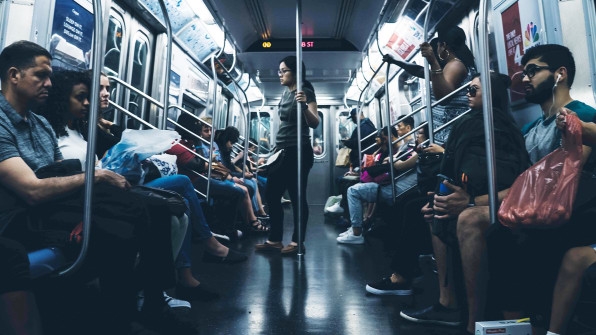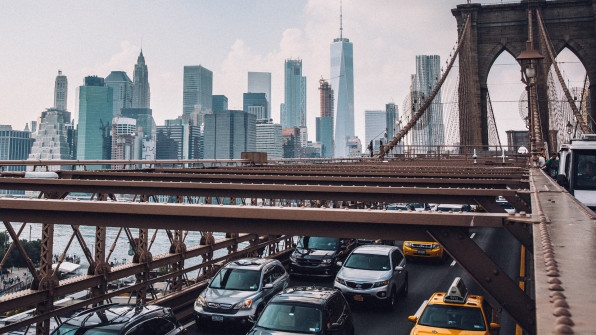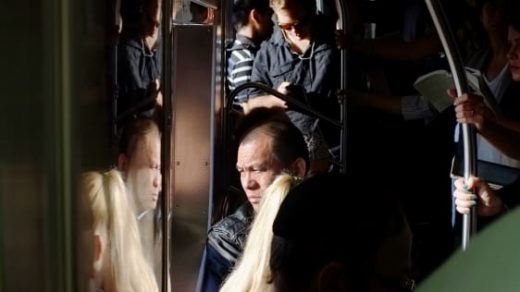New York Needs A Plan To Prevent The Same Crisis That’s Affecting The Bay Area
The New York metropolitan region, which encompasses the city, Long Island, Westchester County, and parts of New Jersey and Connecticut, is facing a crisis, one you might call its Bay Area moment. Namely, like the region all the way on the other side of the country, it’s reached the point where it has to reckon with the fact that it’s failing to develop the housing and infrastructure necessary to support a fast-growing economy and population.
From 1990 to 2015, the New York region welcomed 1.8 million new jobs and 3 million new people: 18% and 15% growth, respectively. But between now and 2040, if New York continues to develop in the same way it’s done for the last 20 years–adding affordable housing stock at the same glacial rate, for instance–jobs will only grow by 7%, and population by 8%. This is in stark contrast to the region’s potential: 16% job growth (1.9 million new positions) and 16% population (3.7 million people).
These projections come from Regional Plan Association, the planning and research nonprofit for the New York metropolitan area, which released its Fourth Regional Plan for the New York metropolitan area on November 30. Since its founding in 1922, RPA has released, every 20 to 30 years, four wide-ranging plans that have had a significant impact on the region: The previous plan, released in 1996, called for the development of a new business district on the Far West Side of Manhattan, which evolved into Hudson Yards (now home to Sidewalk Labs, among myriad other businesses), and the Second Avenue Subway, which opened in January.

The Fourth Plan mainly tackles how the New York region can ensure it hits its potential growth numbers while maintaining affordability and sustainability. “The overall thesis of the plan we came up with is an optimistic one,” says RPA president Tom Wright, speaking at a briefing before the release of the plan. “People talk about how difficult these issues are–affordability, how to invest tens of billions of dollars, if not hundreds of billions of dollars, over a generation in infrastructure,” he adds. “We feel we have recommendations that will really change the dial in each of these areas. We just have to be willing to confront them directly.”
As a non-governmental organization, RPA does not intend its plans to be political tools for current elected officials. “We don’t make these plans to try to convince anyone who’s currently in office,” Wright says. “We like their support, of course, but that’s not the goal here. We see ourselves looking past four-year election cycles to say: What do we need over a 25-year period?”
With local politicians often preoccupied with meeting immediate demands, or swayed by lobbying groups, RPA’s presence and approach serves as something of an idealistic compass for the New York area, which is currently facing down a web of interrelated problems–lack of adequate affordable housing, a failing transportation network, and looming concerns about sustainability and its carbon footprint in the face of potential growth.
In 2017, according the Fourth Regional Plan, “the region ranked as one of the least affordable and most highly segregated regions in the country by both race/ethnicity and income.” What’s more, “approval processes for development projects are also too complex and unpredictable, increasing costs and delaying or preventing too many beneficial projects.” The disconnect between local governments and the agencies that oversee decisions related to housing supply and location of amenities has led to residents paying around 15% more of their income toward rents than they previously did, and in many cases, moving further out from the economic center of the five boroughs in order to afford a place to live.
If this sounds like a familiar narrative, it should. “If you want to see a real-life experiment for what happens when your economy’s growing but you don’t provide housing opportunity for people, go to the Bay Area, and look at what’s happening in San Francisco,” Wright says. “That’s not what we want to have happen here.”
The economy in the Bay Area continues to grow, of course, but lower-income workers have been increasingly pushed out to as far as 100 miles away from where they work. And the transit system there is far from adequate enough to transport its workers, 75% of whom now opt to drive to work solo in the face of no other options.
While New York, with its world-renowned subway system and robust network of regional rails (Long Island Railroad, Metro-North, New Jersey Transit, to name a few) may long have believed itself to be exempt from Bay Area-esque transit woes, RPA has found that not to be the case. In the past year, the subway and bus systems, collectively run by the MTA, have been plagued by systemic failures brought on by defunding, as have mass transit options around the region. Because of a lack of reliable and quick service, bus ridership in parts of Long Island declined by as much as 20% in the last decade; the New York City subway saw a 300,000 drop in daily ridership last year–unheard of for a mass transit network in a booming economic center. And lack of regulation, like a carbon tax or congestion pricing, around road usage, Wright says, has led to the region’s roads rivaling the Bay Area’s for gridlock. “We don’t manage the streets. Essentially as many cars that can pack on can go, and it’ll be your pain threshold that’s essentially our management style,” Wright says.

That needs to change. RPA, in the Fourth Regional Plan, calls for integrating the region’s transit systems and rolling out a payment system that will work across all of its trains and buses (which is already in the works), and adding more capacity. The plan also calls for the state to set up a “Subway Reconstruction Public Benefit Corporation,” which would have no other goal than raising capital and rebuilding the whole subway system in 15 years (the MTA, the plan argues, is too burdened with debt and other obligations, like the bus system, to devote the necessary resources to the subway). The Port Authority, which oversees many of the region’s transit networks and airports, isn’t in much better shape. It currently acts something like a monolithic management entity for all of its subsidiaries, but its wide-ranging responsibilities have strapped its ability to develop viable improvement strategies for each of its agencies. RPA calls for the Port Authority to transition into more of a financing entity, distributing funds to its subsidiary networks to carry out their own strategies and upgrades as necessary. RPA also wants to see the region limit private-car usage by introducing a comprehensive tolling and congestion-pricing scheme, which would charge vehicles driving into the most crowded parts of the region.
Moving away from private cars will open up more opportunities for growth. Prior to the release of the Fourth Regional Plan, RPA put out a smaller report detailing the potential of converting unused regional rail parking lots into walkable communities with affordable housing, and by doing so, creating at least 250,000 new homes. Coupled with an expanded and actually functional integrated public transit system, RPA envisions a scenario in which workers in the region will not have to rely on a car at all to get to where they need to go. This strategy stands in marked contrast to the system at work in the Bay Area, where less than a quarter of office developments–let alone housing–lie within a half-mile of a transit station.
But RPA is not just looking to California as a cautionary tale. The western states, Wright says, are leaders when it comes to environmental policy, and the New York region will need to catch up if it wants to support all of this projected growth in a sustainable way. Even though its suggestions to improve mass transit and locate housing in close proximity to those systems are strong steps toward advancing sustainability by limiting emissions from private cars, it will not be enough, the report notes, to meet the region’s goal of reducing emissions by 80% by 2050. To make that happen, “we want to take a page from the western states, and California’s cap-and-trade program,” Wright says. While the three states within RPA’s jurisdiction already belong to the Regional Greenhouse Gas Initiative, which puts a cap on carbon emissions from the energy sector, RPA proposes expanding the region’s cap-and-trade program to include, like California, a price on all greenhouse gas emissions from the transportation, residential, and industrial sectors.
That revenue from expanded cap-and-trade could, along with funds generated through tolls and congestion pricing, go right back into funding transit and affordable housing improvements. Even though, in silos, the issues RPA is taking on in its Fourth Regional Plan seem intractable, the way through them, Wright says, is to tackle them in concert. “The proposition here is that pursuing one or two of these goals at the expense of others is not improving the region. We want to put forward a positive statement about how these issues are interconnected, and promote solutions to all of them in an interconnected way.”
Fast Company , Read Full Story
(58)














